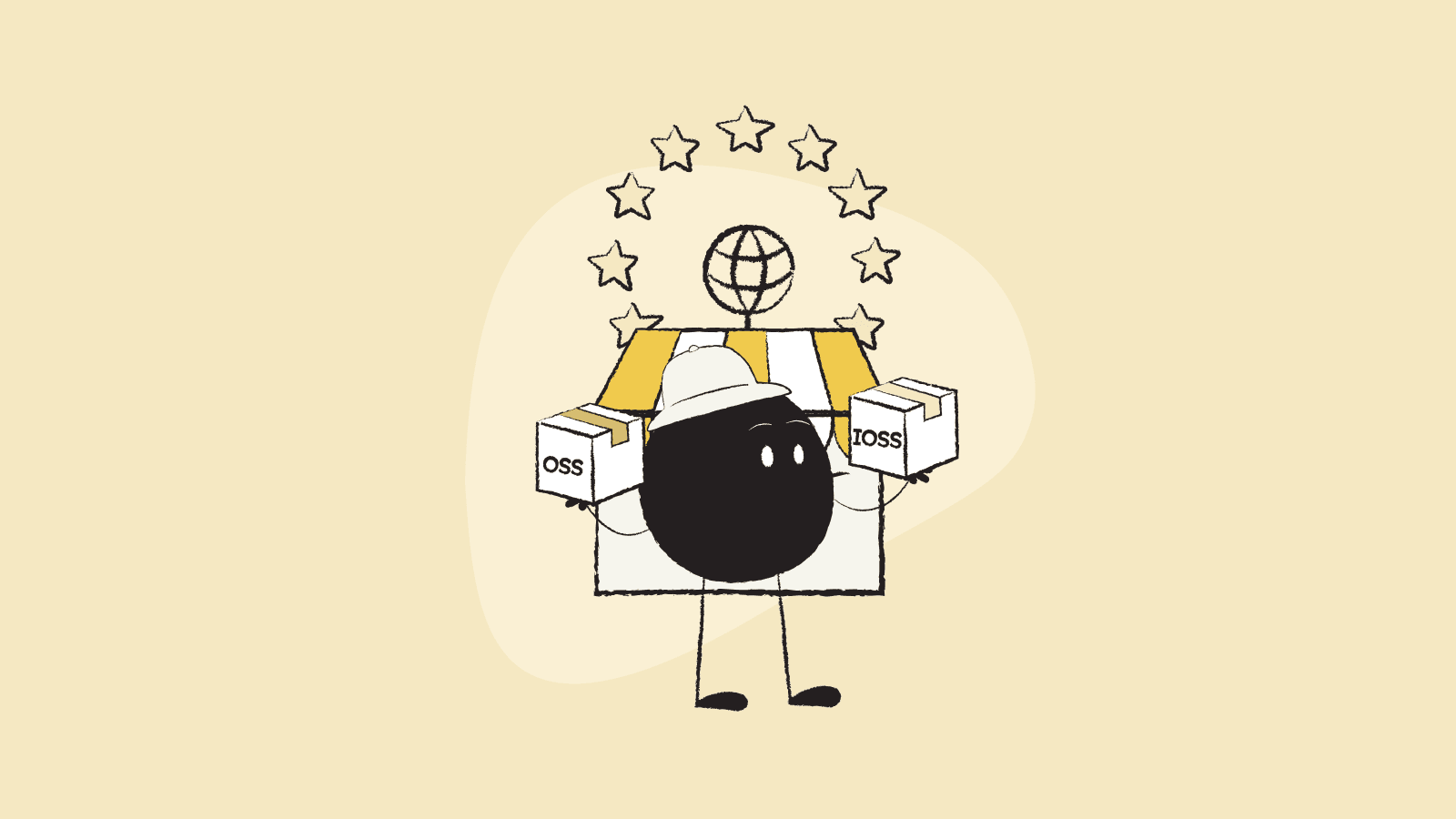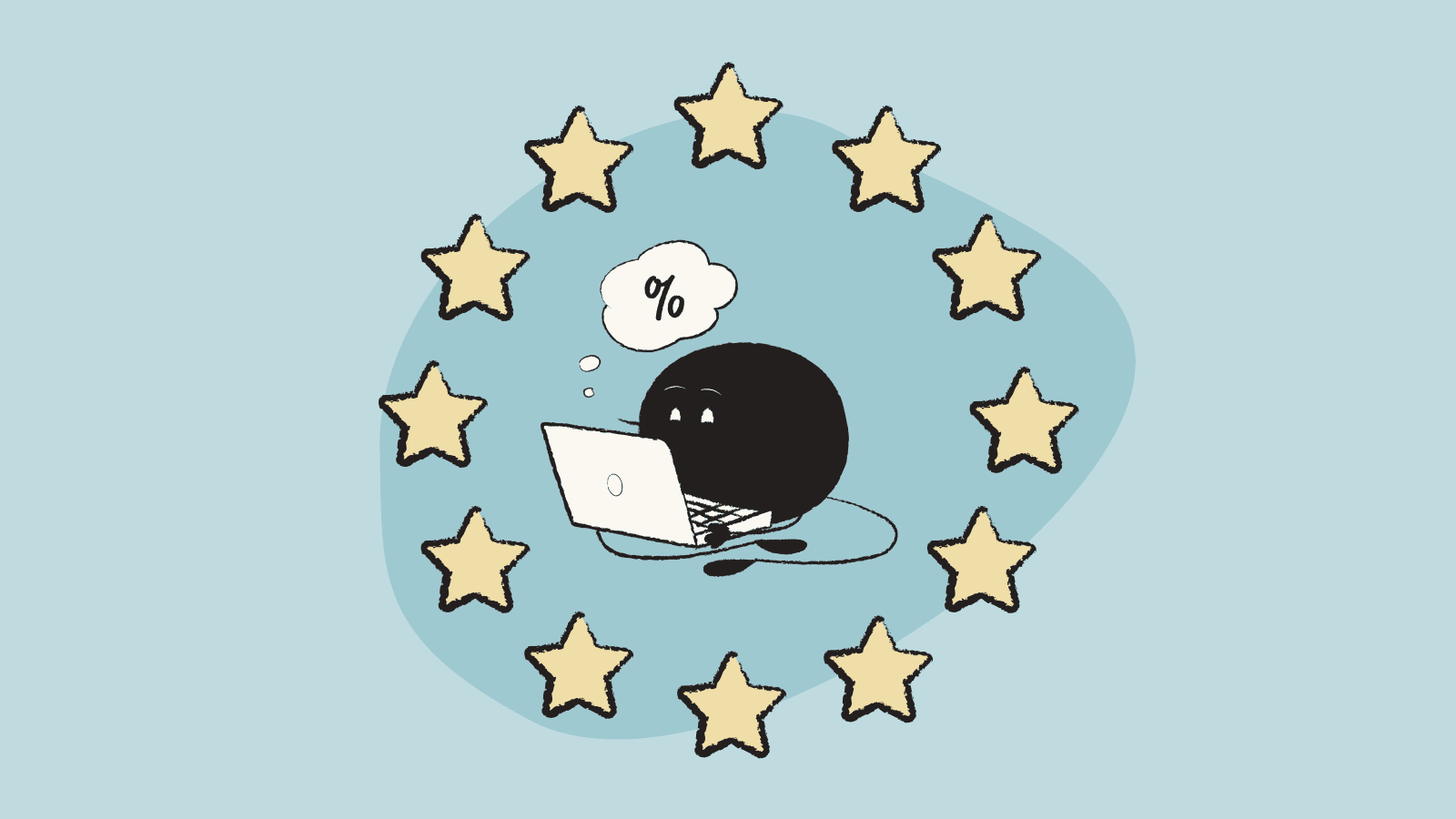You're here:
OSS or IOSS? EU VAT One-Stop Shop rules for e-commerce

Big VAT changes are coming for EU businesses that sell across borders, a.k.a. distance sellers, and for any other businesses importing low value goods into the EU.
We’ve already outlined the full policy package that will come into effect on July 1 2021. Here we want to really focus on the new One-Stop Shop element and how that will affect online sellers both within and outside of the European Union.
The following information applies to sales that you make directly to a private customer, meaning not via an online marketplace, and not to a tax-registered business.
What is the One-Stop Shop model?
You might have heard about the One-Stop Shop for EU VAT, which applies to businesses selling B2C digital goods and services. OSS went into effect in 2015 and has vastly simplified and streamlined the tax process for business owners and the country governments.
Here’s the gist:
Register for VAT + file quarterly returns = one online portal
It’s called a “one-stop shop” because as a business owner, you only have to register for EU VAT in a single country — your home country or, if you’re a foreign business, your adopted homebase (more on that later!).
This is where you file your taxes, too. Even if you’re selling to customers in multiple countries and charging different VAT rates, when the reporting deadlines come around every quarter, you send everything to that single place where you’re registered.
With the new policy changes for e-commerce, the system will be replicated for online businesses selling physical goods, too.
One-Stop Shop (OSS) - for EU-based businesses that sell to customers in other EU countries
Import One-Stop Shop (IOSS) - for non-EU businesses that sell to EU customers. But only for ‘low value’ goods up to €150.
You can use one of the above, depending on whether your business is located inside the Union or not.
OSS - One-Stop Shop for EU businesses
Quick note: If your cross-border sales stays under €10,000 per year, you can stick to your home country’s VAT rules, charging your local rate on all B2C sales and filing as usual.
Once you surpass that 10K threshold, though, you’ll likely want to enroll in the Union OSS scheme.
Register with the OSS
Register your business in the country where you’re physically located. The country’s tax website should offer the option for you to register according to the new VAT e-commerce rules. You’ll receive a VAT Registered Number (VRN) and access to the online portal.
Charge VAT rate of the destination country, at the point of sale
As you probably know, every EU member state has its own VAT rate. And for each B2C sale that you make, you must apply the local VAT rate of the country where your buyer is located.
For example, if you’re selling to someone in France, the transaction is subject to the 20% French VAT.
Send customers an invoice
For B2C sales within the EU, you must invoice your consumer.
File returns
You must file VAT OSS returns after each quarter, by the end of the following month. At the end of the online filing process, you’ll be told how much you owe (or how much you’ll be refunded).
IOSS - the Import One-Stop Shop for non-EU businesses
This scheme is specifically for the sale of “low value” goods (not exceeding €150) from outside the EU to buyers inside the EU. If the value of your goods is higher than that, then you should follow other traditional Import VAT rules.
Register with the OSS
Register your business for VAT in an EU member state. The country’s tax website should offer the option for you to register according to the new VAT e-commerce rules. Look for the ‘non-Union’ or ‘import’ OSS scheme. You’ll receive a VAT Registered Number (VRN) and access to the online portal.
Charge VAT rate of the destination country, at the point of sale*
Every EU member state has its own VAT rate. And for each B2C sale that you make, you must apply the local VAT rate of the country where your buyer is located.
To verify their location, you must collect two pieces of ‘customer location evidence’ to verify, and then store that information in your records for 10 years. The evidence could be:
- Billing address
- Location of the customer’s bank
- Country which issued the credit card
- The IP address location of the buyer’s device
- Country of the SIM card (in cases where the purchase was made on a mobile device)
Send customers a receipt
For B2C sales, there’s no EU invoicing obligation, but a commercial receipt showing the value in your customer’s local currency is recommended. The IOSS number should never be mentioned on an invoice!
File returns
You must file VAT IOSS returns after each quarter, by the end of the following month. At the end of the online filing process, you’ll be told how much you owe (or how much you’ll be refunded).
*As of now, there’s some uncertainty and risk if you do not use IOSS!
It’s expected that if you don’t use the IOSS scheme, your customer will have to pay VAT when they receive your goods. BUT that’s not always the case. (Of course it couldn’t be so simple!) Each country has the right to choose who is responsible for Import VAT on that shipment. Is it you, is it your customer, or is it the platform you sold from (if you used one)? You’ll need to check with each country where you’re selling to be clear on where you — or your buyer — is responsible.
Note: At Quaderno we love providing helpful information and best practices about taxes, but we are not certified tax advisors. For further help, or if you are ever in doubt, please consult a professional tax advisor or the tax authorities.


